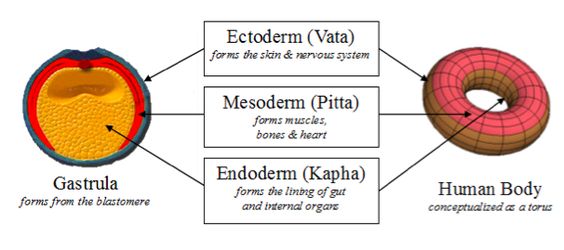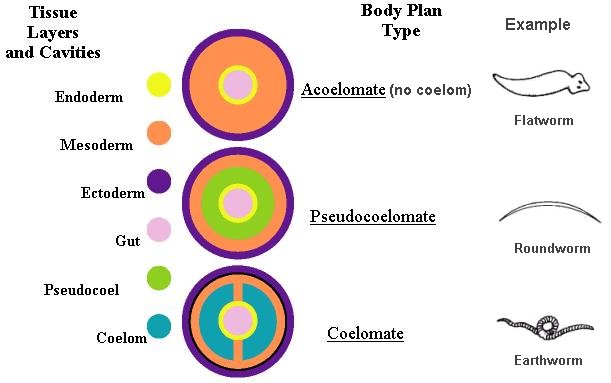This article is part of a series that introduces the upper pantheon of neuromythography.
All members of the animal kingdom follow a design motif (called a bauplan) that betrays their common evolutionary origins. This goes far beyond the observational evidence that Darwin used. In neuromythography, we focus on the common embryology of all animals, from sponges to humans.
Biologists describe three germ layers–ectoderm, endoderm, and mesoderm–that are common to all complex life forms. Ectoderm evolved first, followed by endoderm (in flatworms), and finally the mesoderm (in segmented worms). We can find primitive animals alive that represent earlier iterations of the bauplan of life.

[ELABORATE] This pattern–outer ectoderm, inner endoderm, and a mesoderm derived from the two–follows the pattern of the golden ratio as described by the l-system (light->dark, dark-light/dark).
Vatta (Ectoderm)
All life starts with the closure of an inner space, separated from the outside world. This outer layer is called the ectoderm by biologists. Colonial organisms exhibit this characteristic.
In neuromythography, we assign ectoderm to the Ayurvedic medical concept of Vatta. Ectoderm is the progenitor of the other layers. Importantly, the ectoderm is also the progenitor of the brain.
The epidermis interacts with the outside environment. It is sensitive to light and touch and chemical messages. It exchanges molecules with the environment to maintain internal homeostasis. It defines what is inside and what is outside.
Derivatives: skin (epidermis), brain
Kapha (Endoderm)
As animals began to digest food and expel waste, an inner tube known as the endoderm evolved.
Later in evolution, the brain part of the ectoderm evolved a component to control the endoderm, called the parasympathetic nervous system.
Derivatives: gut, stomach, liver, pancreas, gall bladder, lungs, inner ear, esophagus, thymus, tongue, thyroid
Pitta (Mesoderm)
From the endoderm, under the influence of the ectoderm, emerges a middle layer called the mesoderm.
Derivatives: muscles, bones, blood vessels, heart, spleen, adrenal glands, kidneys, bladder, genitals

The mesoderm itself went through evolutionary development. In flatworms, the mesoderm is disorganized, and they have no internal body cavity outside of the gut. In the roundworm, an internal body cavity gives the worm a symmetrical radial body structure. In coelomates such as the earthworm, the body is lateralized into right and left sides, and the mesoderm completely encloses an inner sea called the coelom, in which advanced mesoderm-derived structures develop.
Later in evolution, the brain part of the ectoderm evolved a component to control the mesoderm, called the sympathetic nervous system.
